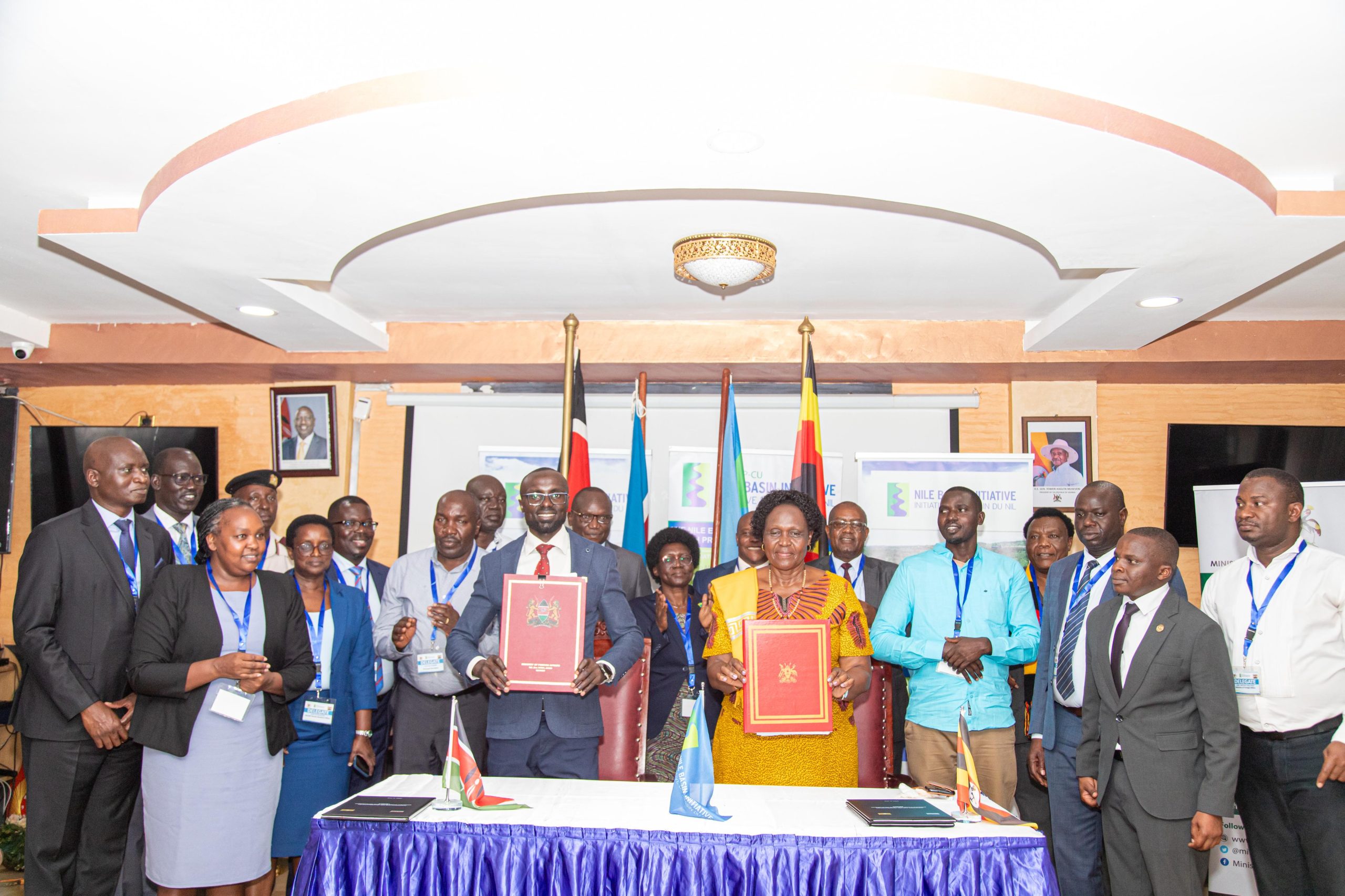
Kenya, Uganda launch joint dam project to benefit over 300,000 residents
In a major step toward regional integration, climate resilience, and food security, Kenya and Uganda have officially launched the implementation phase of the Angololo Water Resources Development Project (AWRDP), a transformative cross-border initiative set to benefit more than 300,000 residents in the Sio-Malaba-Malakisi (SMM) River Sub-basin.
The ceremonial launch took place in Busia County, where Kenya’s Cabinet Secretary for Water, Sanitation and Irrigation, Eng. Eric Mugaa and Principal Secretary Julius Korir joined Uganda’s State Minister for Environment, Beatrice Atim Anywar, to formally kick off the project.
Representing the host county was Busia Deputy Governor Arthur Odera.
The project is closely aligned with President William Ruto and Deputy President Kithure Kindiki’s Bottom-Up Economic Transformation Agenda (BETA), which emphasizes rural development through modern irrigation to enhance food production and household incomes.
As part of this agenda, the Kenyan government recently launched the National Irrigation Sector Investment Plan (NISIP), a bold 10-year roadmap aimed at revolutionizing irrigation, boosting agricultural productivity, and attracting private investment in the water sector.
NISIP’s five-pronged approach includes:
- Farmer-Led Irrigation Development (FLID)
- Public Scheme Improvement
- Commercially Oriented Irrigation
- Revitalization of Irrigation Assets
- Maximizing Community Scheme Benefits
According to CS Mugaa, “This investment plan provides the fastest and most cost-effective pathway for Kenya to achieve its agricultural water development and food security goals. It complements our national development frameworks, including Vision 2030, the 2017 National Irrigation Policy, and BETA.”
Identified in 2010 by the governments of Kenya and Uganda, the Angololo Water Resources Development Project is now entering the construction phase.
It is being implemented under the Nile Equatorial Lakes Subsidiary Action Program (NELSAP) of the Nile Basin Initiative (NBI), with funding from the African Development Bank (AfDB) and the NEPAD Infrastructure Project Preparation Facility (NEPAD-IPPF).
The project’s goal is to modernize agriculture, improve energy access, promote environmental sustainability, and enhance food security.
Key project components include:
- A 40-meter-high composite dam with a storage capacity of 31.6 million cubic meters
- A 1.3 MW hydropower plant with future plans to install 20 MW floating solar pontoons
- A 4,000-hectare irrigation scheme enabling year-round food production
- A domestic and livestock water supply system to serve over 270,000 people
- Restoration of 30% of the 447 km² upstream watershed to improve catchment health
- A fisheries and aquaculture program to boost local food security and livelihoods
- Flood control infrastructure to protect homes and farmlands downstream
Beyond its infrastructure scope, the project is widely seen as a model of transboundary cooperation, signalling stronger ties between Kenya and Uganda through shared natural resource management, enhanced agricultural trade and climate-smart development.
“The Angololo project goes beyond infrastructure. It’s about empowering communities, securing water and food, and building lasting peace through shared prosperity,” said CS Mugaa.
The project is expected to bring wide-ranging benefits, including improved public health, climate resilience and job creation, with special attention to vulnerable groups such as women, youth and people with disabilities.
With NELSAP providing technical oversight, the project is a strong demonstration of how regional collaboration can deliver inclusive, green growth in the Nile Basin region.
The launch was attended by dignitaries and stakeholders from both countries, including Teso North MP Hon. Oku Kaunya, Ugandan MPs from Nambale District, NBI Executive Director Dr. Florence Grace Adongo, development partners, and Busia County Commissioner Mwachaunga Chaunga.
